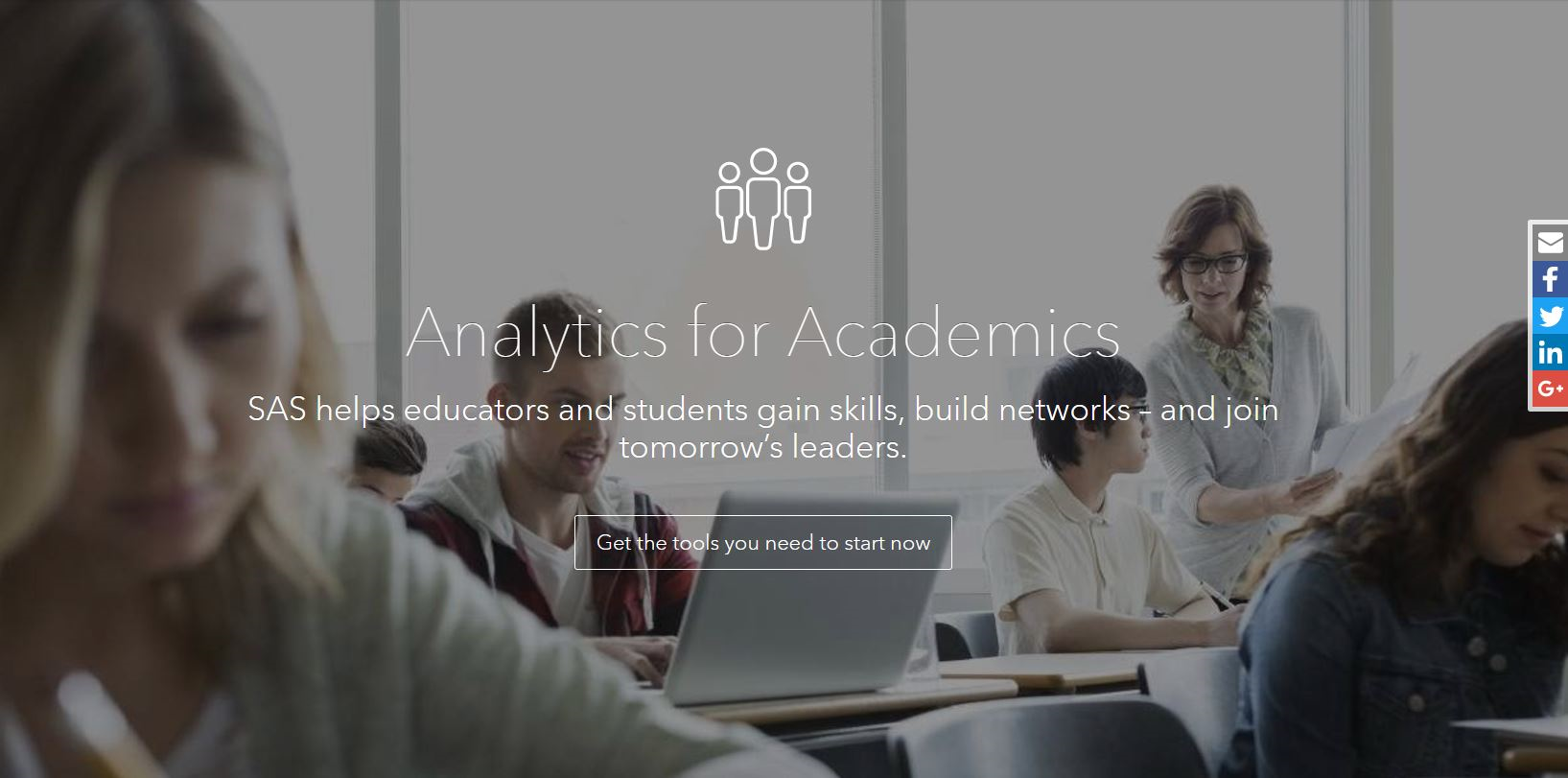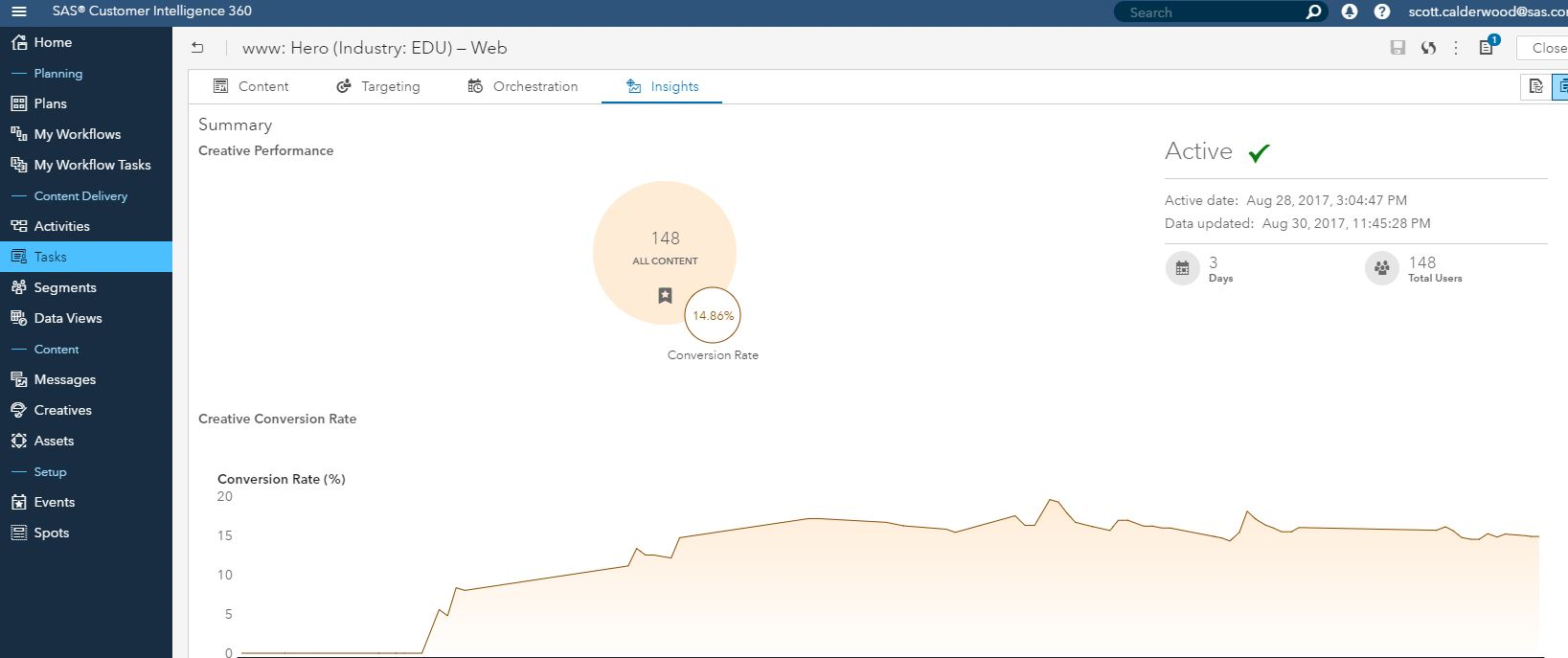 For those of you using SAS Customer Intelligence 360, or generally just interested in the space around web content targeting and personalization capabilities, I wanted to share the latest with what we’re doing at SAS.
For those of you using SAS Customer Intelligence 360, or generally just interested in the space around web content targeting and personalization capabilities, I wanted to share the latest with what we’re doing at SAS.
As the SAS web experience division, we use SAS Customer Intelligence 360 on sas.com for data collection and a variety of a/b testing and content targeting. One of the things we’re starting to use it for is industry segmentation and targeting. Not in a creepy, over-the-top kind of way, but more subtle; in a way that helps to improve the user experience on sas.com.
One of the larger user segments we have on sas.com are academic-related visitors – students, educators and researchers. That’s great for us, because these are important users of SAS.
The other good thing is that we already have great content and resources for those visitors on sas.com as part of our SAS Academic Program section. The challenge and opportunity is: “How do we surface that relevant content to the right user, in a way that then allows them to find what they’re looking for quicker, easier and more efficiently?” That's good for our users and good for us.
For us, part of the answer is to use SAS Customer Intelligence 360 targeting features that allow us to identify the right user, and deliver the right message.
It's as easy as 1-2-3
The way it works is pretty simple:
-
We set up a spot in SAS Customer Intelligence 360. A spot is a place on a web page where we’ll target and deliver content to. In this instance, the spot we created is the feature banner spot on the sas.com homepage.
- Then we simply set up the creative. The creative is the content we'll use to deliver to the spot we created. For this targeting, we created a new homepage feature creative that is designed specifically for our academic segment – students, educators, researchers – and drives them to a specific call to action to our SAS Academic Program content on sas.com. So most visitors will see a standard promo about X, while students and educators will see the page below.

- Lastly, we create the web task. A web task allows us to target content to the website visitor and collect insights and data performance. When we set up this task, one of the steps is to create rules for targeting as applicable. For this experiment, we chose to target by industry group, one of the targeting options within SAS Customer Intelligence 360 that allows us to select an industry group SIC code (Standard Industrial Classification codes). We selected education services. We also created a targeted rule (see the image below) for any referral traffic that comes to sas.com from a top-level domain URL ending in ".edu", since we have a good number of backlinks to sas.com from academic institutions who use SAS.
Once activated, SAS Customer Intelligence 360 recognizes a users IP and associated SIC code, or referral URL, that identified them as a visitor from an academic institution. It then places place them into our segmentation bucket and displays our targeted content and experience.
There's a ton more we can do around this, but to get up and running it's incredibly easy and and proving effective (see the performance tracking below).
If you're interested in learning more, here are the latest and greatest in free tutorials and SAS Customer Intelligence 360 documentation.


